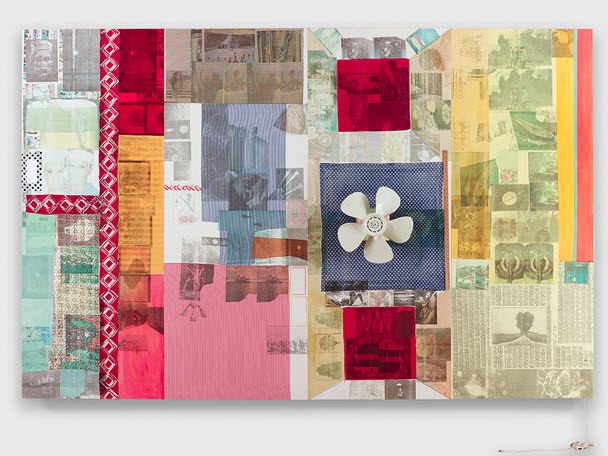ART-PRESENTATION: Robert Rauschenberg
 Often described as the first Postmodern artist, Robert Rauschenberg was a protean innovator whose work in painting, photography, sculpture, performance, and printmaking helped establish the ongoing concerns of contemporary art. Rauschenberg believed that painting related to “Both art and life. Neither can be made”. Following from this belief, he created artworks that move between these realms in constant dialogue with the viewers and the surrounding world, as well as with art history.
Often described as the first Postmodern artist, Robert Rauschenberg was a protean innovator whose work in painting, photography, sculpture, performance, and printmaking helped establish the ongoing concerns of contemporary art. Rauschenberg believed that painting related to “Both art and life. Neither can be made”. Following from this belief, he created artworks that move between these realms in constant dialogue with the viewers and the surrounding world, as well as with art history.
By Dimitris Lempesis
Photo: The Glass House Archive
The exhibition “Robert Rauschenberg: Spreads and Related Works” at The Glass House, is a group of paintings and works on paper chosen to compliment the painting “Recital (Spread)”, (1980) which Philip Johnson purchased that same year. Spread is a term used to describe a wide expanse of land, as well as a fabric covering, it also refers to the large scale of these particular artworks. Paint and solvent transfer are applied to wood panels and often to fabric collage, while found objects, mirrored Plexiglas, and electric lights are commonly included. The “Spreads” series (1975-82) was inspired in part by the Rauschenberg retrospective that was organized by the Smithsonian Institution. He incorporated a tire in one of the works, “Ruby Re-Run (Spread)” (1978), the tire sliced open and flattened against the surface, like a double donut. Its ghost impression sits symmetrically opposite it. Seventeen years earlier, the artist made the “Combine First Landing Jump” which Philip Johnson purchased and later gave to the Museum of Modern Art. It too includes a tire, in this case connected to the lower edge of the painting but also resting on the floor. This interplay between two and three dimensions and between wall and ground had been a part of Rauschenberg’s creative process throughout his career. Additionally, the exhibition includes two works from the “Slide” series. Again the artist used fabric collage combined with solvent transferred images, this time on paper. After the imagery had been transferred, the vertical strips of fabric were shifted slightly, a move calculated to produce chance effects. Although he was rigorous and exacting with his ideas, he often set up situations where he would not be sure of the outcome until the work was finished. He once said, “I want my paintings to be reflections of life”.
Info: Organized by: David White (Senior Curator of the Robert Rauschenberg Foundation), The Glass House, 199 Elm Street, New Canaan, Duration: 1/5-16/8/16, Days & Hours: Mon-Sat 9:30-18:00, Sun 11:00-18:00, You have to book in advance, http://theglasshouse.org
